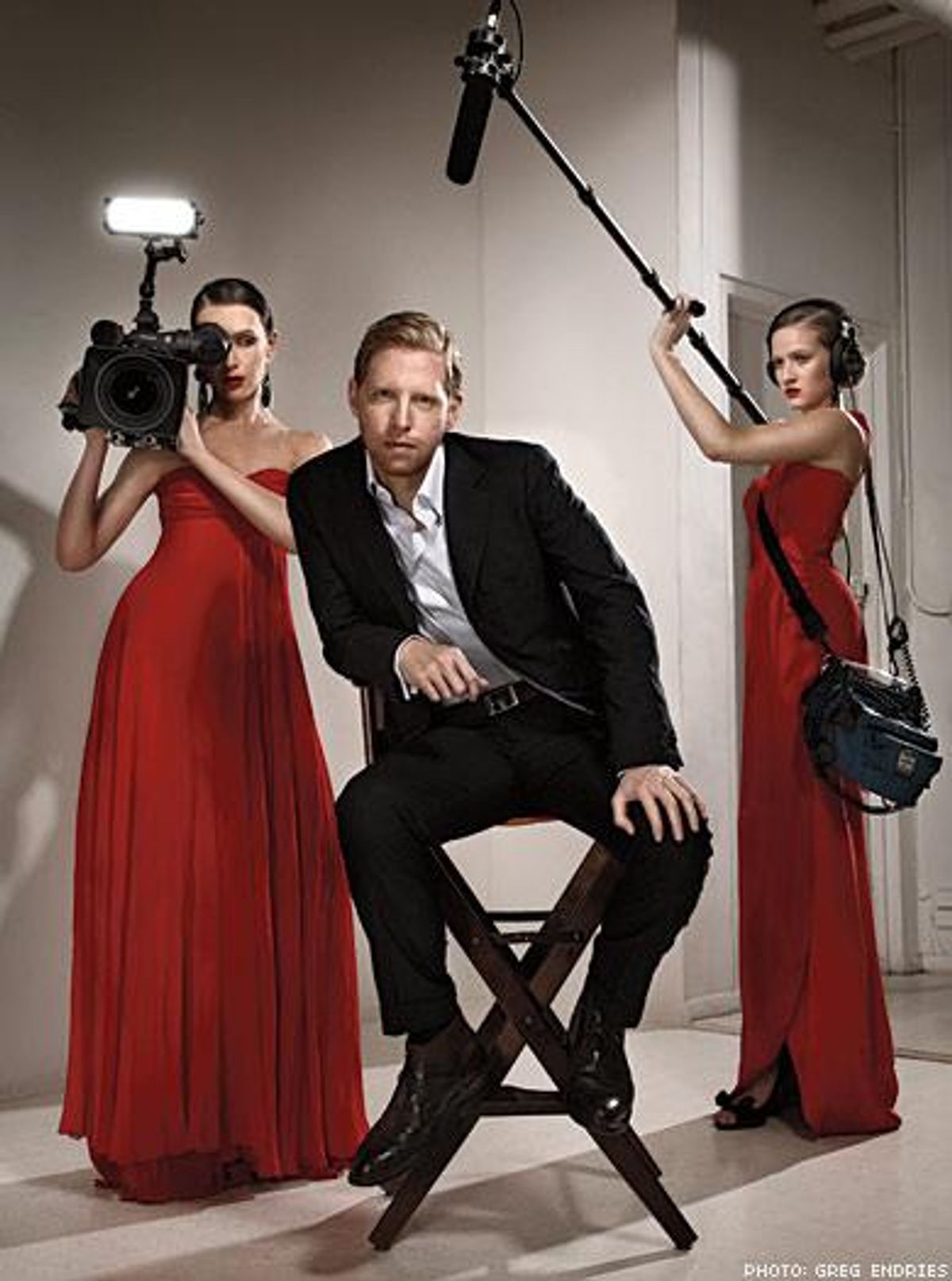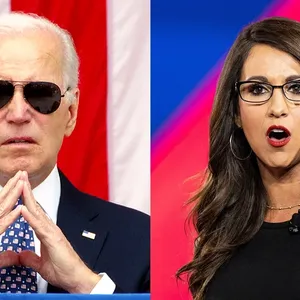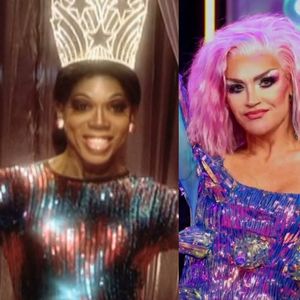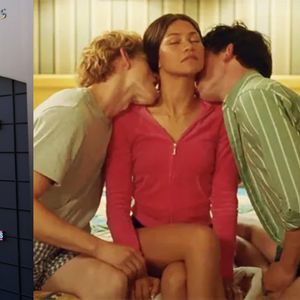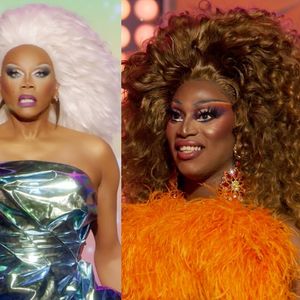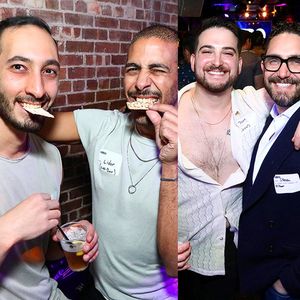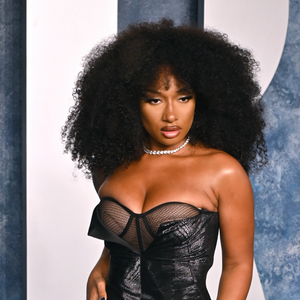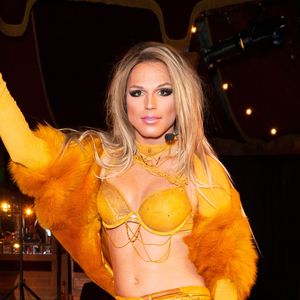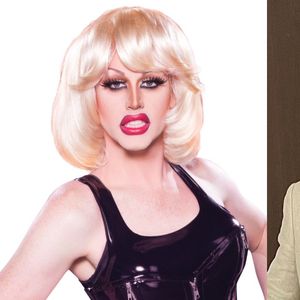We're one banquette away from being truly in the room," jokes Matt Tyrnauer, as he and I are seated at La Grenouille, New York's grand French restaurant. Impeccably, scruffily groomed, the 39-year-old Vanity Fair special correspondent arrives for lunch on a rainy afternoon wearing a blue blazer, polka-dot tie, white shirt, khakis, and brown loafers (no socks), orders sole and a Grand Marnier souffle, and scans the jewel-box dining room, which is separated by towers of lilies and orchids from the tiny seating area in front, where billionaires' wives' gossip traipses languidly among the Romance languages. He spies John Fairchild, the former publisher of Women's Wear Daily who created cults of personality around the top mid-century designers such as Valentino Garavani, who is the subject of Tyrnauer's first documentary film, Valentino: The Last Emperor. The synchronicity delights him. "It's perfect!" he declares.
In this room in the 1960s, Valentino lunched with the ladies he aspired to dress, such as Jacqueline Kennedy, Babe Paley, and Nan Kempner. Today, "it's one of the last places in Manhattan where Valentino feels truly comfortable," Tyrnauer explains, "because it is preserved in aspic, from the genteel New York where people dressed for lunch."
The Last Emperor is an intimate chronicle of this rarefied world, swathed in jaw-dropping extravagance at Valentino's headquarters in Rome and his homes in Gstaad, Paris, London, Tuscany, and New York. While preparing for a party at Valentino's French chateau, for example, a gardener spray-paints the lawn a brighter shade of green. Tyrnauer finds honor in such absurdity by revealing the grueling labor that sustains the dying art of couture and the Old World lifestyle that surrounds it. (When, at a gala retrospective of his work, Valentino gazes up at his most famous dresses, pinned like butterflies to the walls of Rome's Ara Pacis Museum, he shares a satisfied moment with Karl Lagerfeld -- and you realize that, for all their glamour, the detail-obsessed work ethic these men share is really, at heart, a form of geekiness.)
The core of the film, and the aspect of Valentino's life that most fascinates Tyrnauer, is a love story: Valentino's 50-year relationship with Giancarlo Giammetti, his partner in business and in life. Tyrnauer first met the couple when he profiled the designer for Vanity Fair in 2004. On publication, the story caused a bit of a stir, because it was the first time the designer's sexual orientation had been explicitly acknowledged in print. "Each of them lived with his mother until the mother died, and they never told their mothers that they were boyfriends, but this is not unusual in Italy," Tyrnauer explains. Public disclosure "wasn't an easy experience for them," he says, "but we had a level of trust, and I asked them to go ahead with a film immediately."
Though Valentino's is the name above the title, Tyrnauer sees his movie as "a story about two people. I'm very interested in friendship and how people survive together, which is becoming more relevant with each passing month in this country, as we've been struggling with gay marriage and Proposition 8. People are in the streets shouting for something. They're asking for the right to conform, and that's perfectly legitimate, but there are other ways of making the journey, and I think this film shows one way of doing it, even though it might never be copied or reproduced." Smiling, he adds, "Maybe the film should come with a 'don't try this at home' warning."
Tyrnauer, a Los Angeles native (his father produced Murder, She Wrote, among other TV shows), studied film at Wesleyan University and worked in politics on the presidential campaigns of Walter Mondale and Michael Dukakis before becoming a writer, first for Spy magazine, then The New York Observer and Vanity Fair, all under Graydon Carter's leadership. He had no distinct coming-out experience ("Declarations of homosexuality to friends and loved ones always seemed slightly neurotic to me. If you want to bring a boy or a girl around and introduce them, do it," he says), and he identifies with Gore Vidal's evasive aphorism, "I never said I was anything. I'm ecumenical" -- although "it's very time-consuming to take that stance now. It's much easier to say, 'Yes, I'm gay.'" (Vidal, Tyrnauer's "dear friend and mentor," will be the subject of his next documentary; he edits Vidal's articles for Vanity Fair, and he is also the literary executor of Vidal's estate.)
As a reporter, Tyrnauer is something of a polymath: He's written memorable, illuminating articles on subjects including green technology, Martha Stewart, monastery design, and Robert Evans. Though he doesn't consciously seek to write stories about sexuality, he's drawn to writing about relationships, and, he adds coyly, "sometimes you have to tease things out." Occasionally, he meets a subject whose secrets can't be touched: His 1998 profile of Merv Griffin took the closeted titan's "romance" with Eva Gabor at face value, but Tyrnauer didn't sweat the compromise. Of the "permanent bachelor" type, Tyrnauer says, "These people grew up in a different generation. This is how they conducted their lives. It's a lot to ask of people who lived in that space and did not move out of it to completely conform to the current standards. Whether it's psychologically healthy or not, that's a different question."
"Ironically," he says, one eyebrow raised, "Merv Griffin is the one who told me that Siegfried and Roy had been married" -- a rumor they denied in the classic profile Tyrnauer wrote of them in 1999. "That was the first story where I was able to get a grip on people who were reluctant, to get in there and break some ground. In terms of homosexuality, their relationship, they were in this bizarre space, living in their own myth. According to them, a lot of their appeal was that people thought of them as mystical buddies, best friends. You know: Siegfried and Roy! They thought it needed no further explanation."
By and large, though, Tyrnauer meets his subjects with no agenda. Both as a filmmaker and as a writer, he seeks to emulate the technique of the Maysles brothers, who directed Grey Gardens, among many other documentaries. "You let the subjects talk and tell their stories, and if they reach out to you, that's OK," he says, "but you don't try to make things happen." (Fellini is another of Tyrnauer's influences: Elements of The Last Emperor resemble scenes in Roma and 8 1/2, and portions of Nino Rota's score for Amarcord are repurposed here, to poignant and amusing effect.)
Tyrnauer's refreshingly old-fashioned reporting technique is nourished by what seems to be a carefully guarded sense of himself as, if not an outsider, then always one banquette away from being truly in the room. "You're entering people's lives, and their lives are not yours," he says. "Unless you're some sort of society journalist or a titled person who wants to work, you're in the position of being an interloper -- I'm talking about the Vanity Fair world -- and you see a lot and experience a lot, and you have to be comfortable with leaving. I love that. I love coming and going."
This helps account for his extraordinary talent for depicting influential people in the twilight of their careers, which reaches its fullest expression so far in Valentino: The Last Emperor. Among the film's riches is its astringent portrayal of the rapidly changing business of fashion. During the two years Tyrnauer spent making the documentary, Valentino's company was taken over by investors who, as the film depicts, have no interest in anything but the bottom line. The seamstresses in Valentino's studio, who stitch every garment entirely by hand, are practicing an art that "will not happen much longer," Tyrnauer says. "It will go away. It's certainly the last link to la dolce vita. It can be there for 50 years, but it's ephemeral, and when it goes, it goes in a minute."
On our way out of the restaurant, at the coat-check booth, Tyrnauer approaches John Fairchild and says, "Matt Tyrnauer. Good to see you." Shaking hands, Fairchild's expression is affable and inscrutable, a practiced but awkward social grace that could be read as anything from recognition to indulgence. Neither man seems much invested in the gesture, but both seem satisfied by having gone through the motion, and the gilt and mirrored dining room is almost empty as Tyrnauer walks, umbrella-less, into a light afternoon rain.
